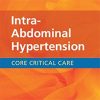General Anesthesia vs. Sedation Using Hemodynamic Control During Intraarterial Treatment for Stroke
pubs.asahq.orgThe functional outcomes 3 months after endovascular treatment for stroke were similar with general anesthesia and sedation. Our results, therefore, suggest that clinicians can use either approach.
Of 351 randomized patients, 345 were included in the analysis.
The primary outcome occurred in 129 of 341 (38%) of the patients: 63 (36%) in the conscious sedation group and 66 (40%) in the general anesthesia group.
Patients in the general anesthesia group experienced more intraoperative hypo- or hypertensive episodes, while the cumulative duration was not different.
The time from onset and from arrival to puncture were longer in the general anesthesia group, while the time from onset to recanalization was similar in both groups.
Recanalization was more often successful in the general anesthesia group.
The incidence of symptomatic intracranial hemorrhage was similar in both groups.

















